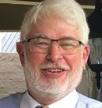“Three billion people in the world today use less electricity than what’s used in my kitchen refrigerator.”
These were the words of Robert Bryce in a documentary film issued in 2019. Mr Bryce is currently a visiting fellow at the Foundation for Research on Equal Opportunity in Austin, Texas. His newest book, A Question of Power: Electricity and the Wealth of Nations, was recently reviewed in The Cato Journal, published by the Cato Institute in Washington DC.
Mr Bryce notes that in 2000 the National Academy of Engineering chose “electrification” as the number one engineering achievement of the twentieth century. “Cheap, abundant, and reliable” lighting fundamentally changes how people spend their days and nights. The “instant power’ provided by electricity has also transformed everything from manufacturing to urban transportation.
Using his refrigerator, which consumes 1 000 kilowatt hours of power annually, as a yardstick Mr Bryce creates a database of the world’s countries. He trifurcates the world into three categories, comparing electricity use per capita and various other socio-economic indicators.
The first, the “unplugged” countries, have an annual electricity use of fewer than 1 000 kilowatt hours per head. These countries, which include India and the Philippines, contain 3.3 billion people, or 44.6% of the world’s population.
The second group, the low-watt countries, consume between 1 000 and 4 000 kilowatt hours per head per year. The countries include Poland, Chile, and China, and contain 2.7 billion people, or 36.7% of the global population.
The third group, the high-watt countries, use at least 4 000 kilowatt hours per person per year. They include the United States (US) and Sweden, and account for 1.4 billion people, or 18.7% of the world’s population.
These figures mean that barely one of five of the world’s people live in high-watt countries. Four out of every five live in low-watt or unplugged countries. The living standards of people in these countries are far below those of people in the richer, high-watt, countries.
In Mr Bryce’s view, these unplugged and low-watt countries, when confronted with a choice between “energy poverty” and increased access to electricity, “will inevitably choose the least expensive form of energy available to provide the maximum available electricity to the greatest number of people”. They will do this, he says, “regardless of the environmental impact”.
According to Mr Bryce, the world’s primary source of energy for electricity remains coal, which is both “abundant and cheap”. By 2017, more than 6 600 coal-fired plants were in operation globally, with plenty more to be added. Coal-fired power accounted for one third of all global electricity generation.
Looking ahead, Mr Bryce says that “renewable” energy will not be sufficient to meet expected electricity demand over the next three decades – “not by a long shot”. Renewables face four “insurmountable” obstacles: cost, storage, scale, and land use.
Shifting to renewables means higher costs for consumers, as experience in Germany, Canada, Australia, and California has shown. Intermittency of solar and wind energy necessitates back-up and storage. “Scaling up” solar energy to meet anticipated growth in global demand for electricity would mean installing 14 times as much solar capacity as now exists in Germany, and doing so annually. “Scaling up” wind capacity would require the installation of as much capacity as currently exists in China, and doing this annually as well.
An all-renewables scenario would entail paving over “state-sized” tracts of land with solar panels and wind turbines. However, Mr Bryce points out, there is “growing political grass-roots resistance [to this] at the local government throughout America, Australia, and Europe”.
What then should be done? Mr Bryce says the solution lies in solar, natural gas, and nuclear. Solar – which currently accounts for only around 0.5% of global demand – will become significant despite the problems of storage and disposal of batteries.
Natural gas is low cost and low carbon and can be produced from a small footprint. Global reserves, including recent finds in the US and offshore in Israel and Africa, are sufficient for the next 52 years at current production rates. Moreover, natural gas can be transported annually as liquefied natural gas (LNG).
As for nuclear, Mr Bryce argues that if you are anti-carbon dioxide and anti-nuclear, you are “pro-blackout”. Without a doubling in nuclear generating capacity - which has in fact been declining - carbon dioxide emissions will “surge”. He favours small nuclear reactors which can be made in factories.
The reviewer, Thomas Hemphill, points out that people in high-watt countries are generally choosing solar and wind power over natural gas and nuclear. They are doing this despite renewables’ “cost disadvantages, inconsistency for continuous power generation, and associated negative environmental impacts”.
He adds: “Where Bryce’s energy source choices may succeed is with unplugged and low-watt countries, where economic growth is paramount”. Natural gas and small nuclear reactors “could be a winning combination that trumps the anti-hydrocarbon ‘green’ ideology in the coming years”.
That said, perhaps the most telling part of this book is the revelation that 3.3 billion people – 44.6% of the people in the world - live in “unplugged” countries and are therefore “still stuck in the dark”. They have yet to benefit from the modern marvel that is electricity. This is a form of inequality that is seldom recognised.
* John Kane-Berman is a policy fellow at the IRR, a think-tank that promotes political and economic freedom. Readers are invited to take a stand with the IRR by clicking here or sending an SMS with your name to 32823. Each SMS costs R1. Ts and Cs apply.

